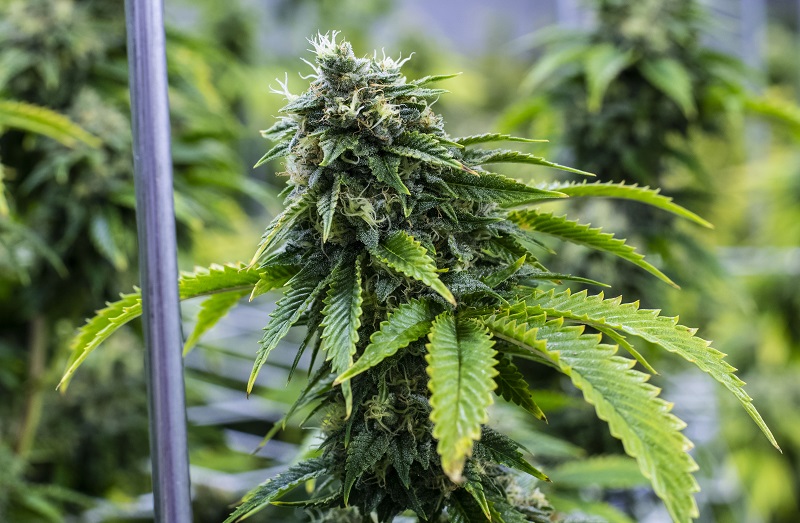The commonly used guideline suggests that sativas tend to be more stimulating and energizing, whereas indicas are more known for their relaxing and calming effects. However, the reality is not so straightforward. Different cannabis plants can produce diverse effects, even within the same category. The outcome largely relies on the plant’s chemical composition and the cultivation methods employed. Frequently, plant varieties are classified into specific chemovars or strains. Chemovars are characterized by their unique combination of cannabinoids and terpenes. This “cannabinoid profile” offers valuable information to users, aiding them in selecting the most suitable chemovar for their needs. Relying solely on names does not provide users with the essential information required to identify the appropriate profile. It is the composition of these compounds that ultimately determines the overall effects of a chemovar.
Cannabinoids
Cannabis plants contain numerous chemical compounds known as cannabinoids. These naturally existing components play a crucial role in generating the various effects, both positive and negative, associated with cannabis consumption. While researchers have not yet fully comprehended the functions of all cannabinoids, they have successfully identified two primary ones: tetrahydrocannabinol (THC) and cannabidiol (CBD), alongside several other less prevalent compounds.
These include:
THC: THC is the primary psychoactive compound found in cannabis plants. It is responsible for the intoxicating “high” or euphoric state associated with cannabis use. Over time, growers have been increasing THC levels in hybrids to achieve higher concentrations of this compound.
CBD: CBD is non-intoxicating and does not induce a euphoric state. However, it may offer various physical benefits, such as pain and nausea reduction, seizure prevention, and migraine relief.
CBN: Cannabinol (CBN) is used to alleviate symptoms and side effects of neurological conditions like epilepsy, seizures, and uncontrollable muscle stiffness.
THCA: Tetrahydrocannabinolic acid (THCA) is similar to THC but does not produce psychoactive effects. It holds potential benefits for reducing inflammation caused by arthritis and autoimmune diseases. It may also help alleviate symptoms of neurological conditions such as Parkinson’s disease and ALS.
CBG: Cannabigerol (CBG) is believed to aid in reducing anxiety and symptoms associated with obsessive-compulsive disorder, post-traumatic stress disorder, and depression.
Terpenes
A significant focus is placed on the levels of THC and CBD in a particular cannabis strain, but recent research indicates that terpenes may have an equally significant impact. Terpenes are additional natural compounds found in cannabis plants. These terpenes contribute to the distinct aroma of the plant and may also influence the effects produced by specific strains.
According to Leafly, some common terpenes include:
Bisabolol: Bisabolol carries a soothing aroma reminiscent of chamomile and tea tree oil. It is believed to possess anti-inflammatory properties, aiding in the reduction of irritation. Additionally, it may have microbial properties and contribute to pain reduction.
Caryophyllene: Known for its peppery and spicy fragrance, caryophyllene is thought to have anxiety-reducing effects, alleviate symptoms of depression, and potentially improve ulcers.
Linalool: Linalool, with its floral notes, is said to promote relaxation and enhance mood.
Myrcene: Myrcene is the most abundant terpene and offers an earthy and herbal scent. It may assist in reducing anxiety and improving sleep quality, aiding in better sleep.
Ocimene: Ocimene emits aromas reminiscent of basil, mango, and parsley. Its primary effects are believed to include congestion relief and potential antimicrobial properties.
Pinene: As the name implies, pinene has a distinct pine aroma. It may help enhance memory, alleviate pain, and mitigate some of the less desirable side effects of THC, such as nausea and coordination issues.
Terpinolene: Terpinolene can impart scents resembling apples, cumin, and conifers. It may possess sedative properties, along with antibacterial and antifungal qualities.
Limonene: Limonene delivers bright and zesty citrus notes. It is reputed to uplift mood and reduce stress.
Humulene: Humulene has a deeply earthy and woody fragrance akin to hops or cloves. Cannabis strains containing this terpene may assist in reducing inflammation.
Eucalyptol: With its refreshing aroma reminiscent of eucalyptus and tea tree oil, eucalyptol provides an invigorating effect. It may also contribute to inflammation reduction and exhibit antibacterial properties.



Just wish to say your article is as surprising The clearness in your post is just cool and i could assume youre an expert on this subject Fine with your permission allow me to grab your RSS feed to keep updated with forthcoming post Thanks a million and please keep up the enjoyable work
Ive read several just right stuff here Certainly price bookmarking for revisiting I wonder how a lot effort you place to create this kind of great informative website